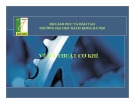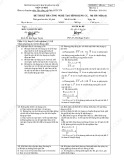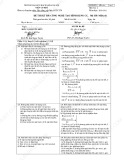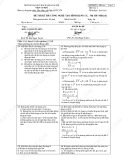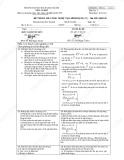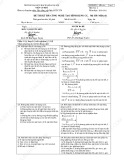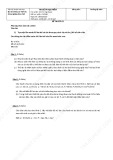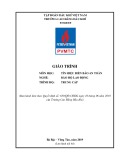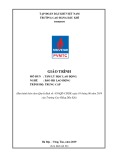
REGULAR ARTICLE
New composite material based on heavy concrete reinforced
by basalt-boron fiber for radioactive waste management
Iryna Romanenko
1
, Maryna Holiuk
1
, Pavlo Kutsyn
1
, Iryna Kutsyna
1
, Hennadii Odynokin
1
, Anatolii Nosovskyi
1
,
Vitalii Pastsuk
2
, Madis Kiisk
2
, Alex Biland
3
, Yurii Chuvashov
4
, and Volodymyr Gulik
1,2,*
1
Nuclear facility safety department, Institute for Safety Problems of Nuclear Power Plants, Lysogirska 12, 03142 Kyiv, Ukraine
2
Institute of Physics, University of Tartu, W. Ostwaldi 1, 50411 Tartu, Estonia
3
US Basalt Corp., Richmond, TX 77407, USA
4
Institute for Problems in Materials Science, Krzhizhanovsky 3, 03142 Kyiv, Ukraine
Received: 15 August 2019 / Accepted: 2 September 2019
Abstract. A new composite material with neutron radiation shielding properties is presented. This fiber
reinforced concrete material incorporates basalt-boron fiber, with different concentrations of boron oxide in
fiber, and is applicable to nuclear energy and nuclear waste management. The methodology for production of
boron oxide (B
2
O
3
) infused basalt fiber has been developed. First experimental samples of basalt boron fiber
containing 6% of B
2
O
3
and 12% B
2
O
3
have been produced in laboratory conditions. The concrete samples
reinforced by two types of basalt-boron fiber with different dosages have been prepared for neutron experiment.
The neutron experimental investigations on radiation shielding properties of concrete reinforced by basalt-boron
fiber have been performed by means of Pu-Be neutron source. The prepared samples have been tested in the
course of several series of tests. It is shown that basalt-boron fibers in concrete improve neutron radiation
shielding properties for neutrons with different energies, but it appears to be most effective when it comes to
thermal neutrons.
1 Introduction
For safe operation of various sources of radioactivity, it is
necessary to have reliable radiation protection. To date,
there are many different types of radiation sources in the
world, such as conventional fission reactors, fusion neutron
sources, D–D and D–T neutron generators, plasma focus
devices used as neutron sources and many gamma sources
[1,2]. These radiation sources are used for industrial,
scientific and medical purposes.
At the moment, there are different types of radiation
shielding. The most widespread is heavy concrete with
various additives [3–12]. Such heavy concrete should have
radiation shielding properties, both against neutron and
gamma irradiation. For example, in order to protect
against gamma radiation, we need to use materials with
large values of the atomic number Z [13]. As a result, for
protection against gamma radiation, fillers are used most
widely, among them such natural minerals as barite
containing a lot of barium, magnetite, which consists of
titanium and iron, and serpentinite. For VVER reactors,
heavy concrete with serpentinite is used as biological
shielding [14]. Serpentinite contains such heavy elements as
iron and magnesium.
In addition to heavy minerals, concrete should contain
elements that are well scattering and absorb neutrons. By
default, the concrete contains a large amount of hydrogen, on
the nuclei of which effective neutron scattering is observed.
In this paper, the authors suggest a new type of
composite material based on heavy concrete reinforced by
improved basalt-boron fiber (BBF), in which the boron
oxide is added during the production process.
2 Basalt-boron fiber
The proposal to add a basalt fiber (BF) containing boron is
based on the fact that there is enough hydrogen in the
concrete to slow down fast neutrons, and if we add a
material with a large neutron absorption cross section (for
example, B-10), then it can become very effective material
with neutron radiation shielding properties [14].
Basalt fiber is produced similarly to glass fiber. The BF
production contains several stages: the preparation of the
basalt rock, the melting, the formation of fiber, the drying of
the fiber, cutting the fiber and obtaining final products [15].
*e-mail: volodymyr.gulik@gmail.com
EPJ Nuclear Sci. Technol. 5, 22 (2019)
©I. Romanenko et al., published by EDP Sciences, 2019
https://doi.org/10.1051/epjn/2019050
Nuclear
Sciences
& Technologies
Available online at:
https://www.epj-n.org
This is an Open Access article distributed under the terms of the Creative Commons Attribution License (https://creativecommons.org/licenses/by/4.0),
which permits unrestricted use, distribution, and reproduction in any medium, provided the original work is properly cited.





